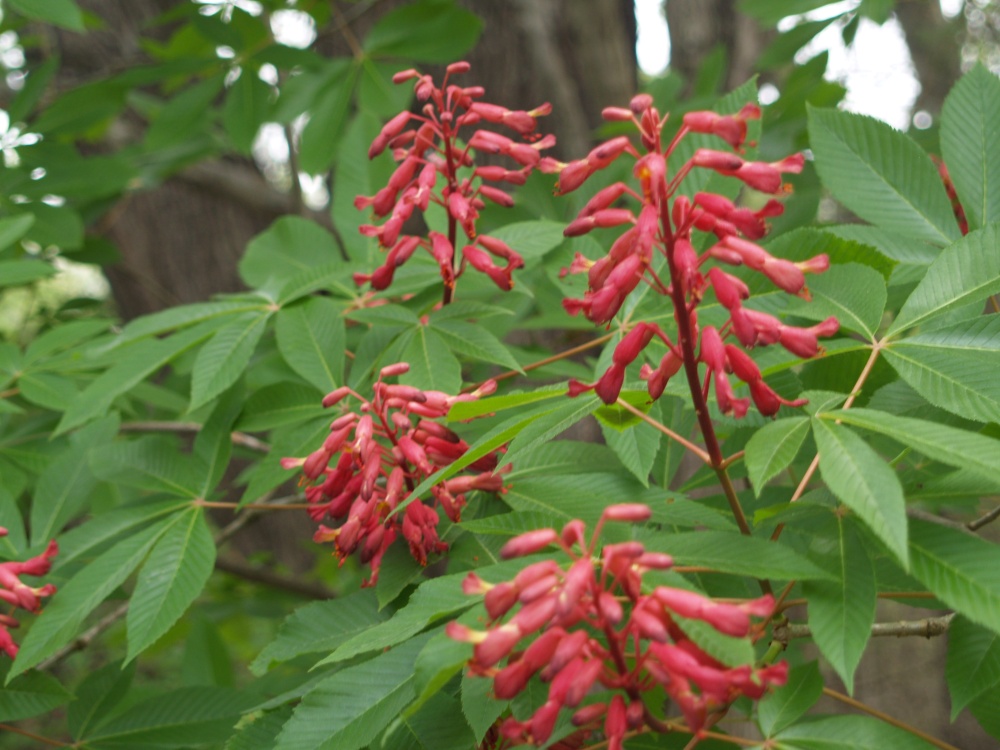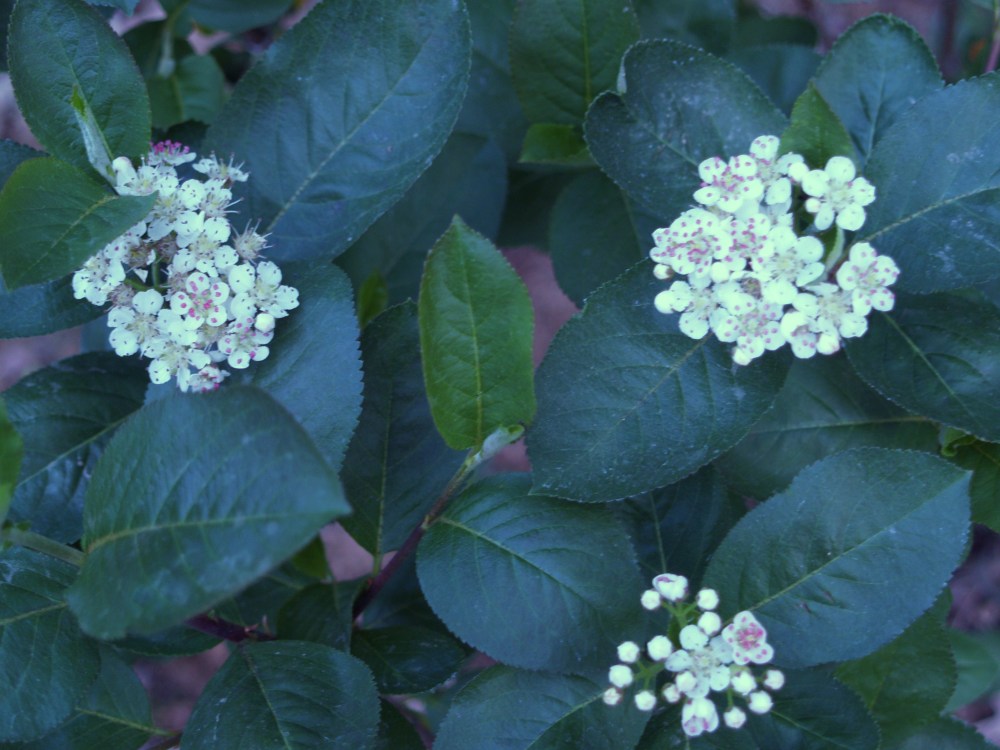Sweetshrub (Calycanthus floridus, below) is native to much of the eastern United States. It’s not commonly found in gardens due to its unremarkable form and foliage, but I’m certain that it deserves greater consideration for shrub borders, and particularly for plantings at the partially shaded edge of wooded spaces. Sweetshrub’s April flowers are distinctive, though a bit unusual in color (reddish-brown) and form, but they are notably fragrant and long lasting. Planted in full sun the shrub will form a compact, six foot tall spreading mound, but in a shady situation it will often be considerably taller and open branched.
In my garden I’ve planted several sweetshrubs in the dense shade between a tall blackgum and bigleaf magnolia, so they have grown to nearly eight feet tall. The branching is very open, much as I would expect from any shrub planted in the forest’s understory, but the shade does not deter flowering so that every branch tip carries a flower or two.
Somewhere through the years I saw a photograph of a yellow flowered sweetshrub (Calycanthus floridus ‘Athens’, below), and when my son was in grad school at the University of Georgia my wife and I often visited the gorgeous state botanical garden nearby where several were prominently planted. As often happens, I fell in love at first sight, and kept an eye out to purchase one for my garden. Several years ago I found a couple that I planted in the shade of the bigleaf magnolia, but lazy idiot that I am, one perished within weeks when I failed to water it. Fortunately, the other survived my neglect, and now it gets along without any care at all.
The yellow sweetshrub flowers a few weeks later than the red, even though the yellow gets a bit more sun. I usually figure that more sun will result in earlier flowering, but that’s not the case with the yellow flowered sweetshrub, and whether it is truly later blooming or just in my garden, I don’t know. References say that the yellow flower is more fragrant than the red, but I can’t tell any difference, though my sense of smell is horribly lacking. Some days I can smell one or both, and the next day neither. This lacking I blame on myself, not the sweetshrubs.
In any case, as often happens when love is rushed, the thrill wears thin sooner than later and now I prefer the red flowered sweetshrub. The red has glossier, darker green foliage than the yellow, and though this is likely to be because of where I’ve planted it, the simple fact is that the red looks a bit better. Both are wonderful, and I don’t mind that they grow with a sparsely branched, open form in the shade. In fact, there is no plant in my woodland area that I favor more. Many shrubs don’t flower at all or grow well in similar circumstances, and for the fragrant and unusual blooms alone sweetshrub is worth growing.
Beside the red flowered sweetshrub I’ve planted a red bottlebrush buckeye (Aesculus pavia, above), and though it was quite open in form when young, now it has filled in considerably. It’s compound leaves are large and glossy, and it has become quite attractive in this wooded area, even when it’s not flowering. The red flowers are superb, but short lived by comparison to the sweetshrub.
Black chokeberry (Aronia melanocarpa, above) is native to much of the eastern United States, but it’s habitat ranges from wetlands to dry hillsides. I’ve planted several in an area of the back garden that is fed by a trickle of a spring so that the subsoil remains damp, even when the surface appears dry. In this difficult area chokeberry and buttonbush (Cepahalanthus occidentalis) thrive. To my thinking, neither plant is well suited to the front of the garden. They tend to be irregularly shaped, and lower branches are often bare with foliage only on the upper half of the shrub. However, irregular shape and bare lower branches don’t mean that the chokeberry is ugly, and its flowers and fruit are also quite nice.
One of my favorites! I have a few I planted from seed as well as a transplant from a neighbor, and I can’t wait until it is 6 ft tall and full of blooms.